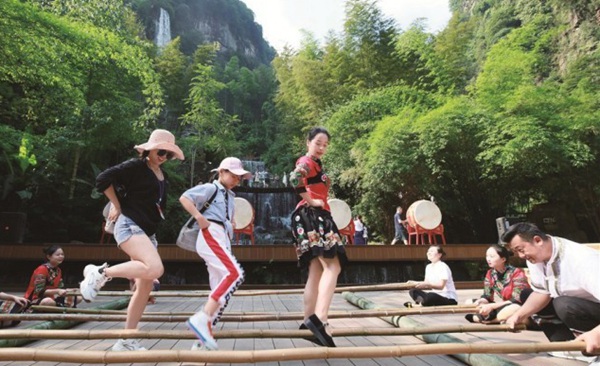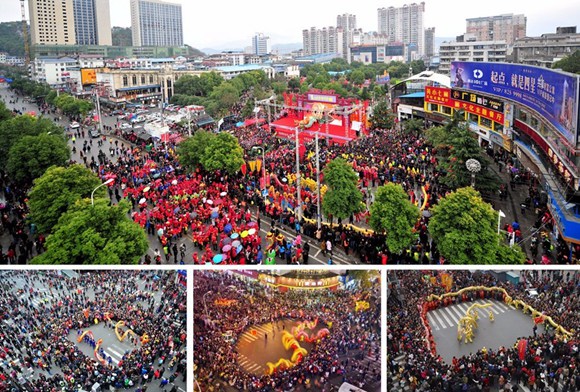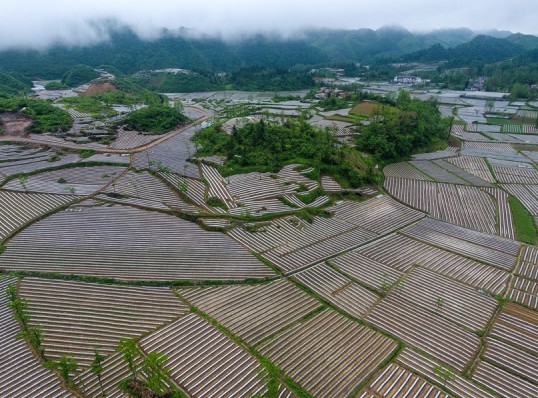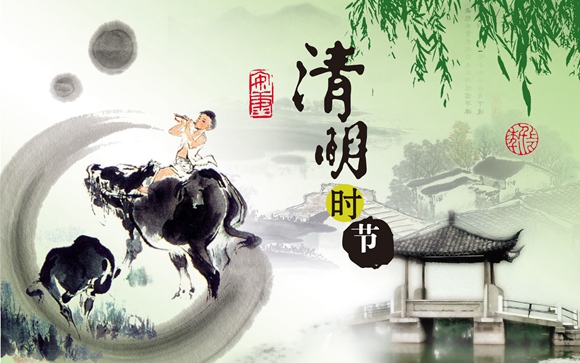Based on recent archaeological discoveries, combined with historical records in pre-Qin Dynasty documents, the long process of the Hubei-Hunan Culture that developed on both sides of the Yangtze River, which made significant contributions to the formation and development of ancient Chinese civilization, can now be traced back to the pre-Yandi Shen Nong and Yandi-Huangdi cultures.
Archaeologically speaking, the early and middle periods of the Neolithic Age in China, i.e. the legendary Shen Nong Era, lie between 5,000 and 10,000 years ago. The legendary Huangdi Era dates back to around 5,000 years ago, corresponding with the transitional period from the terminal stage of the Neolithic Age to the Bronze Age. In history, Yandi and Huangdi can refer to either two well-known tribal chiefs, or their tribes or clans. In the latter case, Yandi and Huangdi represent two eras respectively.
Before these legendary eras, Hunan Province still has a history of Paleolithic culture lasting hundreds of thousands of years. Jiangyong, as well as the nearby region in south Hunan, with a warm and wet climate, is the original wild rice growing area. At the Yuchandong (Cave of Jade Toad) Site in Daoxian County adjoining Jiangyong, pottery and three well-preserved rice seeds over 10,000 years old have been unearthed. Of these three seeds, both the wild and cultivated rice are represented, and the latter with combined characteristics of wild rice, long-grained non-glutinous rice and round-grained non-glutinous rice is the earliest sample of cultivated rice in the world. This discovery has proven that prehistoric people living in todays Daoxian County took the lead in transforming the wild rice by means of cultivation, heralding the consequent cultivation of paddy.
As early as later period of the Paleolithic Age, the middle reaches of the Yangtze River had already become the link between the Hubei Culture on the north side and the Hunan Culture to the south. The Liyang alluvial plain, with spongy soil in the Dongting Lake valley in Hunan, which is bounded on the north by Jiangling and the surrounding area in Hubei, has the natural conditions to develop large-scale cultivation of paddy. Prehistoric people began to move into this plain in the late Paleolithic Age.
Pre-written language ideographical pictures, ideographs and totems have been found at the Pengtoushan Site in Lixian County dating back eight or nine thousand years. Over 20,000 grains of rice, as well as farm and processing implements including wooden lei (ancient fork-like plough), wooden spade, bone spade and wooden pestle were unearthed at the Bashi Site in the same county dating back some 8,000 years ago, a prehistoric site producing the most cultivated paddy in the world. This discovery coincides with the account in Zhouyi, an ancient divinatory book: Shen Nong (Divine Farmer) made lei and si of wood, benefiting the whole country. It also tallies with the records of the 70th generation of Shen Nongs descendants conquering the country in Shizi, a history compiled during the Period of the Warring States and of Yandi proclaiming himself emperor for 530 years in Sequel to Biography of Three Sage Kings. It is thus clear that after migrating into Liyang from Shaanxi and Gansu, the Shen Nong tribe gradually developed settled agriculture and large-scale paddy cultivation. Their mature technology of earthenware-making represented by painted pottery, white pottery and fu in all kinds of forms influenced as far as the Yuanjiang River valley, Xiangjiang River basin, as well as northern Hubei. The excavation of the rice-field and Chengtoushan Old Town ruins in Lixian County, dating back 6,500 years, has proven the legendary account that, according to Shen Nongs rules, it was market time at midday. At the Bashi Site in Lixian County, ruins of some buildings based on platforms were excavated. The main body of the foundation of one building is about 40 centimeters above ground, with its four corners extending outside as horns. The plane figure of this foundation is like a starfish. The discovery indicates that the Bashi Site obviously built for ritual purposes could be the political center during the Shen Nong Era. Legend has it that Shen Nong left his homeland for the south to practice medicine, and was killed by a poisonous herb during his experiments with various plants. Due to the invention of agriculture, the Shen Nong clan was supported as the leading tribe. With the lapse of time, after being defeated in the Battle of Banquan, Yandi (Red Emperor) -- Shen Nongs last offspring -- led his tribe to retire to their native land -- presumably, todays Lixian County as well as the surrounding area -- where Yandi was finally buried near his ancestors tombs. By and large, growing in the heartland of the Shen Nong tribe, the Hubei-Hunan Culture which developed in the Shen Nong Era was consequently bathed in the spirit of the Shen Nong tribal culture.
Even before Yandis death, Huangdis tribe rose in the Yellow River valley, and united with Yandis tribe to enter into the Yandi-Huangdi alliance, the most powerful tribal league in ancient China. Yandi -- the founder of this alliance -- was later replaced by Huangdi (Yellow Emperor) who expanded the territory and unified the Central Plains. Since then, ancient China entered the tribal league epoch on the eve of the appearance of the state. Holding high the banner of the Yandi-Huangdi alliance, Huangdi advanced the primitive civilization founded by Yandi to a new historical stage, and laid the solid basis for China, the most populous country with an ancient civilization, the greatest number of ethnic groups, and thousands of years of unification. The Hubei-Hunan Culture was spontaneously merged into the Yandi-Huangdi Culture.
The basic spirit of the Yandi-Huangdi Culture was epitomized in Zhouyi as Self-discipline and Social Commitment, which became the foundation of the Hubei-Hunan Culture. The pragmatic, flexible, proactive and matter-of-fact philosophical thinking of Chou Tun-i in the Northern Song Dynasty and Wang Fu-chih living in the late Ming and early Qing dynasties had been deeply influenced by this long-standing tradition. The early enlightenment thinking in the 17th century represented by Wang Fu-chihs philosophy provided important theoretical backing for the modern national salvation movement popular at the end of the Qing Dynasty.









